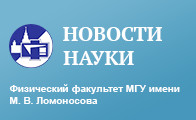Volcanic earthquakes are known to be a dangerous natural phenomenon, which needs a thorough investigation. They imply the thermal destruction of rocks when magma fills the volcanic chamber. Field and laboratory studies of the process of the thermal destruction of rocks in relation to volcanological seismology are of great interest. Today one of the undeveloped problems in this area is the analysis of the statistics of acoustic emission events. In this work, we analyzed the laboratory experiments of heating of the specimens of granites and basalts. We implemented and exercised the methodology of the estimation of thermally stimulated acoustic emission activity and b-value on the stage of heating and on the stage of cooling, for whole stages and for evolution inside stages. b-value was estimated by linear regression and maximum likelihood methods. We also systemized experiments in accordance to the type of thermally stimulated acoustic emission activity in order to compare the results. Regularity was noticed: b-value for specimens with high acoustic emission activity is lower. The general behavior of acoustic emission activity and variations of b-value for the specimens under investigation do not show the correlation with each other and do not depend on the type of rock.
43.40.Le Techniques for nondestructive evaluation and monitoring, acoustic emission
91.40.Zz Volcano monitoring; volcanic hazards and risks
93.85.-q Instruments and techniques for geophysical research: Exploration geophysics
$^1$Faculty of Physics, M.V. Lomonosov Moscow State University\
$^2$The Schmidt Institute of Physics of the Earth of the Russian Academy of Sciences



